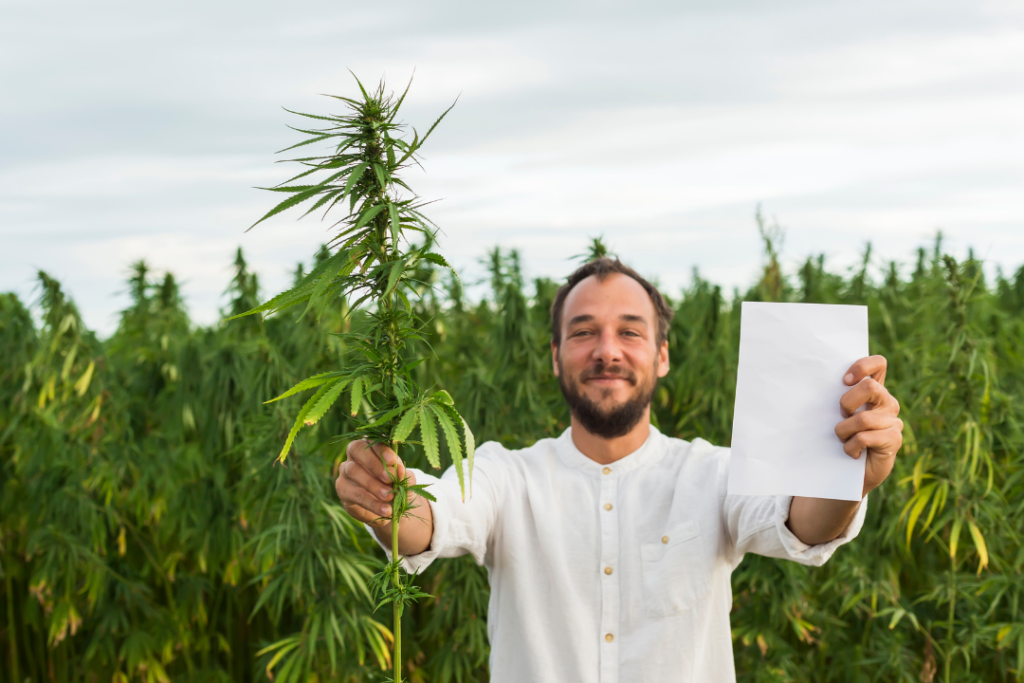Hemp is a valuable resource to replace tree paper in many ways. In fact, up until the 1930s, it was set to be the predominant material for paper in America. Popular Mechanics had even deemed it to be on the verge of becoming a “billion-dollar crop”.
So, what happened? And how much better is hemp paper really?
The first paper was made from hemp…
In China’s early Western Han Dynasty, way back in 200-150 BC, the first paper was crafted out of hemp and a few other agricultural materials. Hemp had already been around for centuries as a source of food, fabric, rope, and other things. A versatile plant, it was perfect for making paper.

Following this invention, China realized how useful paper was. They made more from hemp for record-keeping, note-taking, and other purposes. They also used it for wrapping fragile materials like porcelain in shipments.
Eventually, it spread to the Middle East, where the first paper mills were set up in 700, creating paper from hemp. From there, its use continued to spread throughout the world. The Gutenberg Bible — one of the first mass-produced books that triggered the age of printed books in the West — was printed on hemp paper. So were Thomas Paine’s Pamphlets, the original novels of Mark Twain, and the first two drafts of the Declaration of Independence.
The use of hemp for paper was common and widespread. It was sensible as well.
So, what happened?
In the 1930s, hemp was all the rage. A recent invention had made it much easier to harvest and process hemp, countries were funding hemp farms due to their potential, and Henry Ford was working on a hemp-fueled car that was made of hemp (which he succeeded in, but it never came to fruition on a mass-scale).
But unfortunately, it all swiftly came to an end by 1937. Propaganda created by powerful newspapers and lumber barons who saw hemp as a great threat to their business swept the nation. A smear campaign on everything hemp was launched through the 1930s, painting hemp’s sister plant, marijuana, as an evil drug. Most, if not all, of what came out in those days has since been disproven, but it stuck. And for a long time. It was enough to stop hemp dead in its tracks.
Other countries followed suit. Hemp, despite its versatility, was lumped in with marijuana as a dangerous drug that led to murders and other heinous crimes. The hemp-boom was over.

Why it matters
Globally, it’s estimated that we cut down enough trees to forest all of South Carolina every year. In North America, we have lost 97% of the natural forests that were here in the 1700s. The world’s rainforests could disappear within a hundred years if no change is made.
Though some paper companies do plant trees after clearing a forest, this does nothing to help the damage made to the ecosystem.
Deforestation also contributes to animal extinction, running them out of their natural habitat so that they have nowhere to survive. 70-80% of animals live in Earth’s forests. Scientists estimate that we’re now losing species at 1,000 to 10,000 times the original rate, with literally dozens going extinct every day. At this rate, they are predicting that 30-50% of all species could possibly be facing extinction by mid-century.
Can hemp paper help?
Hemp paper has many benefits over paper derived from trees…
– One acre of hemp can produce as much paper as 4-10 acres of trees over a 20-year period.
– Hemp stalks grow in 4 months, whereas trees take 20-80 years.
– Hemp has a higher concentration of cellulose than wood, the principal ingredient in paper.

– Trees are made up of only 30% cellulose, requiring the use of toxic chemicals to remove the other 70%. Hemp, on the other hand, can have up to 85% cellulose content.
– Hemp has lower lignin content than wood. Hemp contains 5-24% lignin whereas wood has 20-35%. This is beneficial as lignin must be removed from the pulp before it can be processed as paper.
– Hemp paper is more durable than trees. Hemp paper does not yellow, crack, or deteriorate like tree paper.
– The wider use of hemp paper can help reduce deforestation.
– Hemp paper can be recycled up to 8 times, compared to just 3 times for paper made from wood pulp.
To their credit, many paper companies today have found greener ways to continue producing paper. It’s just unfortunate that this wasn’t always the case. If big industries didn’t get their way eighty years ago, we would likely be living in a cleaner, greener world today.
Another amazing use of hemp
Outside of paper, hemp has many amazing uses, one of which has to do with CBD (cannabidiol). Unfortunately, with the banning of hemp in 1937, CBD’s health benefits didn’t get to become studied until later in the century. As a result, a lot of aches and stresses were likely had that could have been avoided.
But now, after 2018’s Farm Bill legalized hemp once again, the amazing benefits are being realized. The problem is, CBD is hard for the body to absorb and use.
That’s why SomaLeaf encapsulates the CBD molecules in liposomes — allowing them to get delivered to the gut wall where they can be taken into the bloodstream and used by the body.
>>> Click here to see what benefits YOU can get from this amazing hemp extract.






